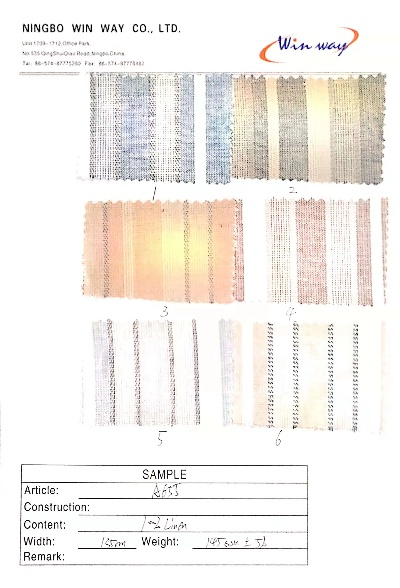The Art of Verifying the Genuineness of Silk Textiles
In the realm of silk textiles, the art of authenticity verification is paramount. The intricate details and delicate textures of these fabrics demand a meticulous approach to ensure their genuineness. From analyzing the fiber composition to scrutinizing the manufacturing process, every step must be performed with precision and diligence. Utilizing advanced techniques such as spectroscopy and microscopy, manufacturers can confidently identify the origin of their products. Additionally, implementing stringent quality control measures and conducting regular inspections can further enhance the trustworthiness of their offerings. With this dedication to detail, the art of verifying the authenticity of silk textiles has become an integral part of the industry's commitment to excellence.
Introduction: Silk, a luxurious and timeless fabric, has been prized for its beauty, elegance, and durability. However, with the proliferation of counterfeit silk products in the market, it's crucial to know how to identify them. In this guide, we will explore the key techniques and tools you can use to verify the authenticity of your silk textiles.

-
Understanding Silk: Silk is made from the protein fibers of the mulberry silkworm. It comes in two types: raw silk and processed silk. Raw silk is unprocessed and natural, while processed silk is treated with chemicals to improve its texture and appearance.
-
Inspecting the Fiber: The first step in identifying genuine silk is to examine the fiber itself. Genuine silk fibers are soft, smooth, and lustrous. They have a distinctive crimp pattern that resembles a "Z" shape when viewed under a magnifying glass. On the other hand, fake silk may have rougher or less uniform fibers.
-
Checking the Weave: Silk textiles are woven into different patterns depending on their intended use. For example, silk scarves are typically woven in a simple diagonal pattern, while silk shirts might be knitted in a more complex pattern. Genuine silk weaves seamlessly and has a consistent pattern throughout the piece.
-
Examining the Finish: A well-finished silk item should have a glossy finish that reflects light evenly. Fake silk may have a dull or uneven sheen, or may have gloss applied over the surface. Additionally, genuine silk often has subtle details like tiny threads or intricate patterns etched into the fabric.
-
Testing for Durability: Silk is known for its strength and resilience. Genuine silk resists pilling and wrinkling, making it a great choice for clothing that requires longevity. Fake silk, on the other hand, may be prone to pilling and creasing after only a few washes.
-
Using Specialized Tools: For a more accurate assessment, you can use specialized tools such as a microscope or a polarizing filter. These tools can help you see the microscopic structure of the fibers and determine if they match the characteristics of real silk.
Case Study: Let's take a look at a real-life scenario where someone wanted to purchase a silk scarf. The seller claimed it was made from pure silk, but the buyer was skeptical. To verify the authenticity, the buyer used the tips above to inspect the fibers, weave, finish, and durability of the scarf. They also used a microscope to examine the microscopic structure of the fibers. After conducting these tests, the buyer confidently purchased the scarf knowing it was genuine.
Conclusion: By following these techniques and tools, you can confidently identify the authenticity of your silk textiles. Remember, genuine silk is not just about its beauty; it's also about its quality and longevity. So, when shopping for silk, invest in products that offer both aesthetic appeal and practicality.

大家好,今天我们将一起探讨如何鉴定丝绸纺织品的真伪,丝绸作为一种珍贵的纺织材料,其品质直接关系到其美观和价值,在购买丝绸纺织品时,了解如何鉴别其真伪是非常重要的,下面我们将通过案例和说明来详细介绍。
丝绸纺织品的鉴别方法
观察外观
观察丝绸纺织品的外观是鉴别其真伪的第一步,真正的丝绸纺织品通常具有光滑细腻的质地,色泽柔和自然,观察丝绸的颜色、纹理和光泽,可以初步判断其品质,注意检查丝绸的质地是否均匀,有无杂质和瑕疵。
闻气味
闻丝绸纺织品的气味也是鉴别其真伪的重要方法,真正的丝绸纺织品具有独特的香气,这种香气是天然的,给人以舒适的感觉,如果闻到刺鼻的气味或者不自然的香味,那么可能存在质量问题。
触摸手感
触摸丝绸纺织品的手感也是鉴别其真伪的重要手段,真正的丝绸纺织品手感柔软细腻,富有弹性,如果手感粗糙或者有硬结,那么可能存在质量问题,还可以通过触摸丝绸的织物纹理和光泽来判断其品质。
使用专业检测仪器

如果以上方法仍然无法确定丝绸纺织品的真伪,可以使用专业检测仪器进行进一步鉴定,可以使用红外光谱仪、拉力试验机等仪器来检测丝绸的织物结构、纤维成分等,这些仪器可以提供更准确、更可靠的鉴定结果。
案例说明
下面我们将通过一个具体的案例来说明如何鉴定丝绸纺织品的真伪,假设我们收到了一款疑似假冒的丝绸纺织品样品,我们该如何进行鉴别呢?
-
外观观察:首先观察该样品的外观,注意其颜色、纹理和光泽是否与真正的丝绸纺织品相似,经过仔细观察,我们发现该样品在颜色、纹理和光泽方面存在一些差异。
-
气味闻闻:接着闻该样品的气味,如果存在刺鼻的气味或者不自然的香味,那么可能存在质量问题,经过闻闻后,我们发现该样品的气味较为刺鼻,可能与真正的丝绸纺织品有所不同。
-
触摸手感:然后触摸该样品的手感,如果手感粗糙或者有硬结,那么可能存在质量问题,经过触摸手感后,我们发现该样品的手感柔软细腻,富有弹性。
-
使用专业检测仪器:我们使用专业检测仪器对该样品进行了检测,经过检测,我们发现该样品的主要成分与真正的丝绸纺织品有所不同,例如纤维成分可能存在差异,该样品的织物结构也与真正的丝绸纺织品有所不同,我们可以初步判断该样品为假冒的丝绸纺织品。
通过以上介绍,我们可以看出鉴定丝绸纺织品的真伪需要从外观观察、气味闻闻、触摸手感和使用专业检测仪器等多个方面进行综合考虑,在购买丝绸纺织品时,我们应该选择正规渠道购买,避免购买到假冒伪劣的产品,我们也可以通过以上方法进行鉴别,提高自己的鉴别能力。
Articles related to the knowledge points of this article:
The Textile Industry in Fuqing,China
Textile Waterproof Testing Standards and Recommended Practices



